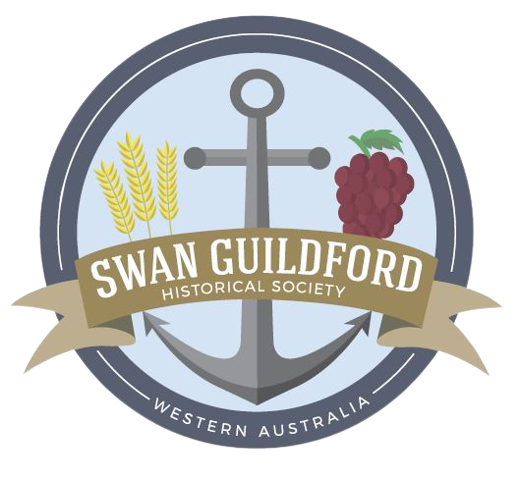Swan Guildford Historical Society
Swan Valley Pioneers
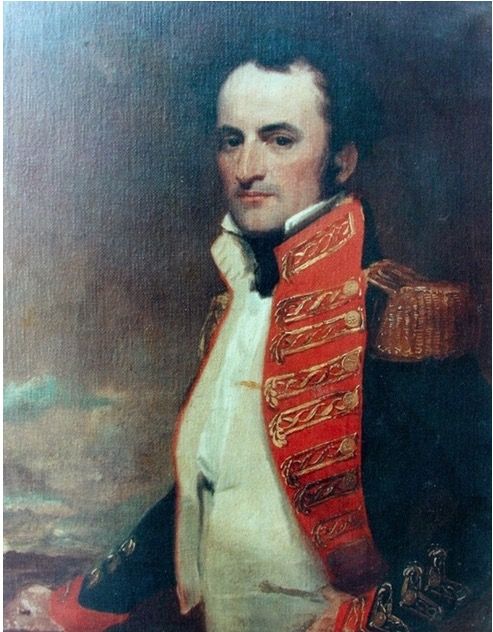
Sir James Stirling, Western Australia’s first Governor
George Barrett-Lennard
Mr. Edward Pomeroy Barrett-Lennard, the youngest son of Sir Thomas Barrett-Lennard, Bart., of Belhus, Essex, England, was among the first settlers to arrive in Western Australia in 1829. He selected land on the banks of the Swan River, and owned the property now known as St. Lennard’s. On his death the property passed to his son, Edward Graham Barrett-Lennard, and in turn, was acquired by George Barrett-Lennard.
George was educated in Western Australia and continued the policy of development laid down by his forefathers. He expanded upon agricultural pursuits and specialised in viticulture. He was largely responsible for the inauguration of the grape export industry and studied grape growing and drying with one of his sons in Greece and Spain.
In 1886 George married Miss Amy Drake-Brockman. They had four sons and two daughters. One son was killed at Gallipoli and another drowned at North Beach.
George Barrett-Lennard died at his residence, St. Leonard’s, West Swan in 1917, aged 55. The funeral took place in the Upper Swan Churchyard.
William Locke Brockman
William Locke Brockman was born in Kent, England. In 1827 He married Anne Frances Elizabeth, daughter of Hugh Hamersley, the rector of Pyrton, near Oxford. He set sail for Fremantle, arriving in January 1830.
Brockman was more established than most new arrivals to the Colony, bringing his own livestock with him including merino ewes, rams and a prefabricated house. He was also fortunate enough to bring several servants and became the original grantee of Location Nine, Herne Hill, Upper Swan. He planted crops as soon as possible and is believed to be the first person in the colony to sow wheat. Milling presented problems so he had his wheat ground at Fremantle, while building his own horse-mill which was operating by 1837. Most of Brockman’s success came from breeding sheep and horses plus stock that commanded high prices. He later exported horses to India.
Brockman imported farm machinery and was known to test soils to determine its suitability for successful farming. He made a number of exploratory journeys looking for high quality pastoral land and purchased Seabrook in Northam and Cheriton near Gingin. He also leased several other properties.
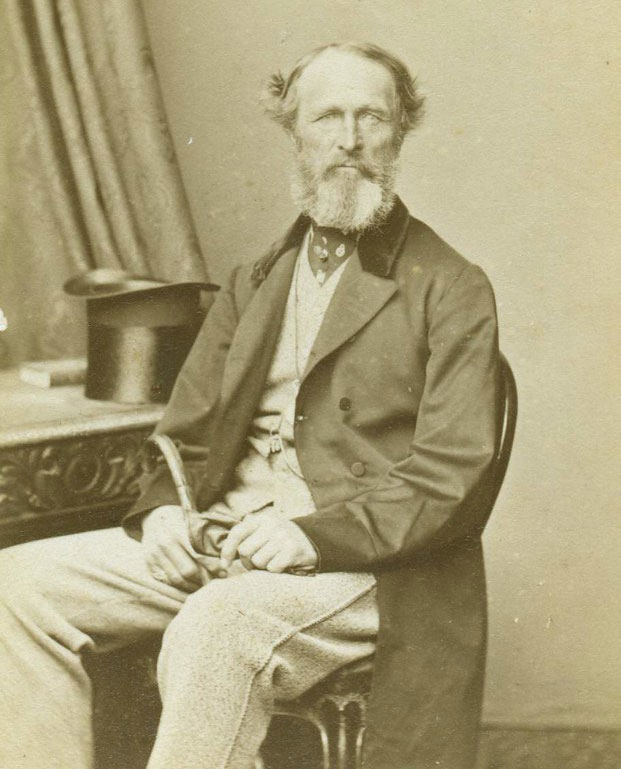
1802 – 1872
In June 1831 Brockman was elected a foundation member of the Swan Agricultural Society, serving as President. He was also on the committee of the Guildford Mechanics’ Institute from its inception. He had been appointed Justice of the Peace, and Magistrate for Swan district in 1833. He served in this role until his death in 1872. In 1839 Brockman was a non-official nominee in the Legislative Council; after reconstruction of the council in 1868, he served for six months in 1872 as an elected member for the province of Swan.
Under an 1842 Act for the construction and management of roads, a central committee and eight district committees were formed. Brockman was appointed a member of both the Central and the Swan District committees. When the Districts Road Act of 1871 created road districts, Brockman was the first chairman of the Swan Road Board. Upon his death on 28 November 1872 at Herne Hill and interment in the Middle Swan Church of England cemetery, an obituary termed him ‘Father of the Swan and one of its most persevering and active of settlers’.
- https://www.parliament.wa.gov.au/parliament/library/MPHistoricalData.nsf/(Lookup)/B8CC194A8EC5EF4348257E5900835A4E?OpenDocument
- https://trove.nla.gov.au/people/1469650
- https://www.google.com/search?q=william+locke+brockman&client=safari&rls=en&source=lnms&tbm=isch&sa=X&ved=2ahUKEwi2wbmM_rToAhVD4zgGHRTaCNwQ_AUoAnoECBcQBA&biw=1440&bih=839
Edward Hamersley (Junior)
1 September 1835 – 14 January 1921
Edward Hamersley was born in Paris on 1 September 1835. His father was one of the leading Western Australian landholders of his day; his brother Samuel and nephew Vernon both became Members of the Legislative Council; William Locke Brockman was his uncle; his sister Margaret married Sir John Forest; and his wife Jane was sister to Andrew and Charles Dempster.
Hamersley Junior’s family had emigrated to Western Australia in 1837, where his father, Edward became a wealthy and prominent pastoralist. In 1843, the family returned to France, before returning once again to Western Australia three years later, and building a home in Guildford.
In 1853, he took charge of his father’s horse station Richmond, in the Williams district. He was extremely unhappy at being sent away from the social scene at Guildford. As a result, he managed the station poorly, prompting a contemporary John Walloston to write
“Hamersley’s horse station… seems to me quite an apology for a breeding establishment… not a bit of hay nor handful of corn to be had…. The native dogs destroy the foals as soon as dropped.”
In 1858, his younger brother took over the station, and Hamersley was transferred to Wilberforce, another of his father’s stations, located in York.
He married Jane Dempster in February 1867. They had seven sons and three daughters.
Hamersley stood for election in September 1874 and was elected to the Legislative Council seat of Toodyay, only to resign the following year. He was elected again to the Legislative Council seat of York on 11th February 1880.
He was widowed in April 1913, and died on 14 January 1921.
George Fletcher Moore
George Fletcher Moore was born on 10 December 1798 in Bond’s Glen, Donemana, County Tyrone, Ireland. He was educated at Foyle College, Londonderry, and at Trinity College, Dublin. After graduating in 1820 he was called to the Irish Bar where he practised for six years until he decided to apply for a legal position in the proposed Swan River settlement. This was refused by the Colonial Office as it was felt that the governor should be free to make his own recommendations. The Office did, however, supply a letter of recommendation to Sir James Stirling as did several of his Irish legal colleagues. Moore then made his own way to the Colony in the brig Cleopatra. Accompanied by four servants he landed at Fremantle in October 1830 and obtained a grant, which he called Millendon, on the Upper Swan.
He did not practice law in his new home. Instead he became a farmer, purchasing 34 merino sheep and 10 lambs. By 1836 he owned 800 fine-woolled sheep and had leased a farm at York. By 1884 he owned 24,000 acres of land, including valuable town allotments. Moore documented the difficulties he encountered in developing his property including labour and food shortages and inflated prices. He joined the Agricultural and Horticultural Society formed on 16 July 1831, serving as secretary for a while. He attended the governor’s first big ball, writing a song for the occasion and singing it during the evening.
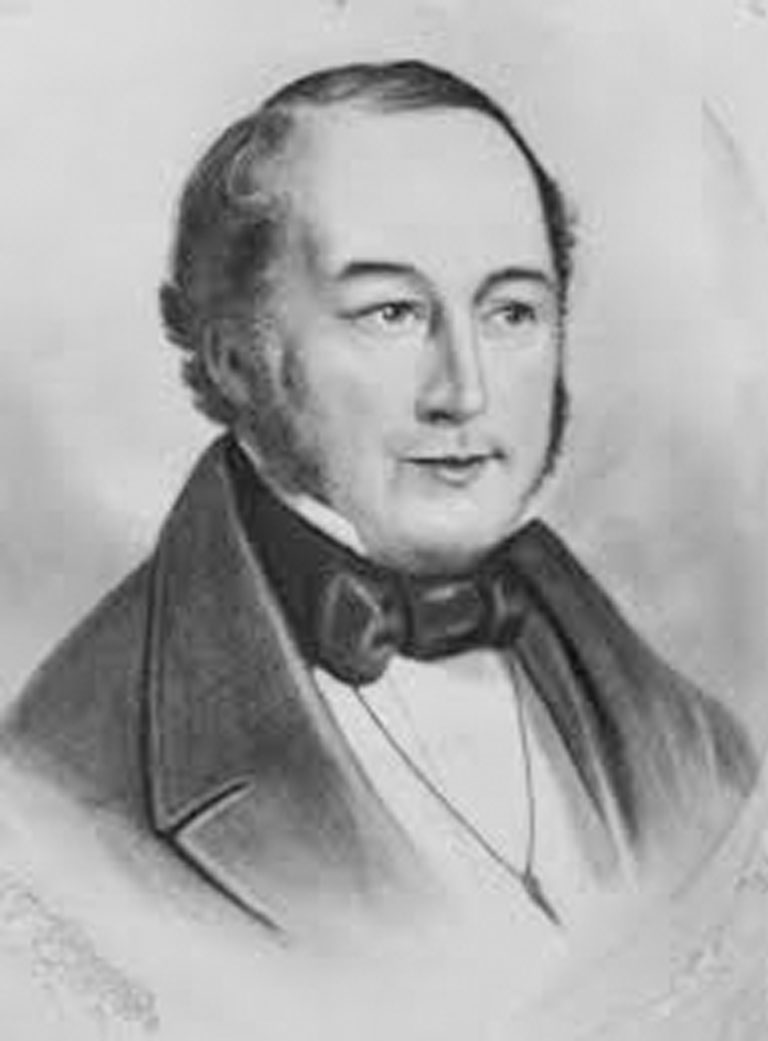
1798 – 1886
Less than a month after his arrival Moore accompanied the Colonial Secretary and party in search of Aboriginal people concerned in a robbery. Developing an interest in the language and culture of local Noongar people, he published “A Descriptive Vocabulary of the Language in Common Use Amongst the Aborigines of Western Australia, with Copious Meanings, Embodying Much Interesting Information Regarding the Habits, Manners and Customs of the Natives and the Natural History of the Country” (London, 1842), and another publication “Evidences of an Inland Sea Collected from the Natives of the Swan River Settlement”. (Dublin, 1837).
Moore had regular and amicable contact with some Aborigines, but also believed that harsh measures should be employed to induce them to conform to European laws. ‘They are troublesome friends and dangerous enemies’, he wrote, ‘a drawback upon our success which we had not calculated upon, a charge upon our lands which we were not apprised of, and a thorn in our sides which we cannot get rid of and which constantly reminds us of the inconvenience of its presence’.
Moore was a keen explorer, tracing the course of the Swan River to its junction with the Avon River. In 1831 he accompanied Ensign Dale to the York district, previously unseen by Europeans. In 1835 Moore went northwards and in May 1836 reached the river named after him. Later in the same year, with Colonial Secretary, Peter Broun, and George Leake, he crossed grazing and agricultural land east and north of Northam. As a result of Lieutenant George Grey’s reports of his 1839 expedition Moore was sent to examine the coastal district round Champion Bay and Point Moore (also named after him). Moore also visited Houtman Abrolhos in 1839.
On 10 February 1832 the Colony’s first legislative ordinance (2 Wm IV, no 1) established a civil court. Moore was sworn in as Commissioner on 17 February 1832. He was then appointed Advocate General and became an early member of the Legislative and Executive Council. It appears Moore never worked in private practice in Western Australia. He did, however, act as commissioner of works, roads and bridges, and with Surveyor-General John Septimus Roe, waded among the ‘Flats’ of Perth waters in December 1834 and again early in 1838, probing about with sticks. Together they were responsible for determining the site of the original Perth Causeway across the ‘Flats’ to the south bank of the river.
Moore was appointed to act as Colonial Secretary in July 1846. In October the same year, he married Fanny Mary Jane Jackson (1814-1863), the stepdaughter of Governor Clarke. In 1852 he was granted leave to visit his father in Ireland and whilst gone he discovered a misunderstanding over his absentee pay. He resigned and did not return to the Colony. Thus ended a distinguished public career.
Moore’s wife spent many years chronically ill and he felt he would never be able to return to Western Australia. On 16 June 1859 he wrote, ‘I fear my chance of seeing Millendon again is feeble and remote’. After his wife’s death on 24 October 1863, he lived in London and twenty years later wrote of his ‘isolated unfriended position. Even in this great city I am almost alone, in my eighty-fifth year’. He died at Kensington in England on 30 December 1886.
Samuel Edward Moore
1 October 1803 – 4 July 1849
Samuel Edward Moore was born in 1803 in Londonderry (Derry), Ireland, the younger brother of George Fletcher Moore. He began his working life in manufacturing but this failed due to the heavy duties placed on Irish glass. He was made a freeman of the city of Derry in 1827 and began trading in farm produce.
Moore married Dora Mary Jane “Dorothy” Dalgety in 1832. They came to the Swan River Colony following his brother’s favourable reports about opportunities available in the new settlement. They arrived on the Quebec Trader in April 1834. For a number of months, the couple stayed with Samuel’s older brother on his land grant along the Swan. Gradually Samuel Moore purchased his own land in the same district, together with town lots in Perth and Fremantle. He was known as a “progressive agriculturalist” and “business man”, owning stores and importing agencies. He had his own river barges used to convey goods between Fremantle, Perth and Guildford, returning with produce from the Swan region and the hinterland.
Samuel was Chairman of the Western Australian Bank in its foundation year, 1841; Director of the Agricultural Society; a committee member of both the Western Australian Mining Company and a steamship company. In 1841, he leased Garden Island, and the Guildford Steam Mill in 1844.
Moore and his wife had six children and in the 1840s, he took up a grant of 780 acres (3.2 km2) in the northern part of the suburb, now known as Karrinyup.
1848 was a mixed year for Moore, he was beset by bad debts, family illness, poor crops, and, in August the ship Vixen, used to ship his produce, was wrecked. He was, however appointed to one of four non-official nominee positions on the Legislative Council, a position he held until his death in July 1849 at the age of 49.
Walter Padbury
Walter Padbury was born in Stonesfield, Oxfordshire on December 22, 1820. He was ten years old when he and his father came on the ship Protector to the Swan River Colony. It was intended that Padbury (Senior) would find work and accommodation, then send for the family to join them. Tragedy struck when Walter’s father died of pneumonia, soon after their arrival. The young boy was left in the care of a couple who had travelled with them on the Protector. They promptly stole the money his father had left to care for the child and disappeared. Walter was left to fend for himself in a strange land.
He supported himself by working in a variety of jobs including carpenter’s assistant, shepherd, drover, and stock agent. Through hard work, he eventually built an empire, making him a rich man. By 1849 he had enough money to return to England to bring out the rest of his family.
He was the first pastoralist in the North West of Western Australia in 1863. With low wool prices and the loss of one of his ships, he was forced to abandon this enterprise after three years. In 1865 he acquired the ship Bridgetown and commenced trading goods to India, Singapore, and London. He ran this trading operation until 1890, when too much competition caused Walter to withdraw.
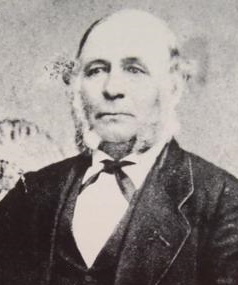
1820 – 1907
Throughout his life, Walter served the community in many ways. In 1864 he was elected to the Perth City Council, representing the Swan River District in the Legislative Assembly. In 1871 he was elected to the first Victoria Plains Road Board, and became the President of the Agricultural Society, a position he held again in 1885. He was appointed as a Justice of the Peace in 1883. A year later he was elected Chairman of the Guildford Municipal Council.
At the age of 78, Walter Padbury established the Peerless Flour Mills in James Street Guildford. It was a very profitable business. At its peak, the mill was producing high quality flour and exporting it to Egypt and England. The mill covered four acres of land, with a storage capacity for 20,000 to 25,000 bags of grain, including the granary. A railway siding at the rear of the mill meant material and goods could be transported quickly and efficiently. It was a tragedy for the town when Padbury’s flour mill burnt to the ground 1975.
Walter’s wife Charlotte died in 1895. When Walter died in 1907 with no heirs, his vast fortune was bequeathed to churches and charities. His story is truly a rags to riches story, showing that with luck, and a lot of hard work, it’s possible to make dreams come true.
John Septimus Roe
John Septimus Roe was born at Newbury, Berkshire, in England. His father secured a place for him at Christ’s Hospital, London, where he became a pupil of the mathematical school.
In 1813, Roe was appointed a midshipman in the Royal Navy, sailing in the ship Rippon, which was employed in the blockade of the French coast. Roe spent many hours studying log-books, charts and drawing maps. In 1817 he passed examinations in mathematics and navigation and was posted as master’s mate to the surveying service in New South Wales.
Soon after arriving, Roe sailed on the first of three coastal surveys. On a voyage of 5000 miles (8047 km), the Mermaid circumnavigated Australia and surveys were made of sections of the coastline, chiefly north of Exmouth Gulf. In December 1818 the Mermaid was used in a brief survey of the Derwent River, and on 8 May 1819 Roe again sailed in her on a survey voyage to the northernmost part of Australia. The report of this voyage included information about the waters of the Great Barrier Reef and the coast westwards from the Gulf of Carpentaria to the Bonaparte Archipelago on the west coast.
In May 1821, Roe surveyed the coast of Western Australia, as far as Roebuck Bay, Cape Leeuwin and Cape Levêque. In 1824 He explored northern Australia including Melville Island. His report was handed to the Admiralty on his return to England late in 1827. He was appointed to the Hydrographic Office to work on sailing directions for publication in The Australia Directory (London, 1830).
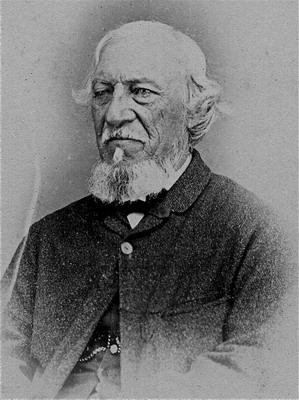
8 May 1797 – 28 May 1878
Roe married Matilda Bennett shortly before departing for the Swan River Colony, where he had been offered the post of Surveyor-General. The couple sailed on the Parmelia. He immediately set about surveying the sea approaches to the Swan River and the sites of Fremantle and Perth where he was responsible for drawing up most of the land regulations. As Surveyor-General he became a member of the Executive and Legislative Councils in Parliament.
He was active in founding the Swan River Mechanics’ Institute and was its President for many years. His collection of botanical specimens won him membership of the Linnean Society; later he extended his collection to include zoology and mineralogy and thus laid the foundations of what became the Perth Museum. Roe noted as early as 31 December 1830 that ‘the neighbourhood of Mt Eliza [King’s Park] should be reserved for public purposes’.
Roe recorded sixteen journeys of exploration. The first eight, between 1830 and 1835 were comparatively short trips to the south and the south-west. In 1836 he went east of Perth for about 180 miles (290 km) and then north for 100 miles (161 km). His final expedition in 1848-49 occupied five months and took him to Russell Range east of Esperance. During his lifetime, Roe also influenced younger explorers John and Alexander Forrest, who accompanied him as surveyors on some journeys, and the Gregory brothers who also worked with him.
Roe died on 28th May 1878. A diary entry shortly before his death states “Ï have not been an idle man in my generation”. His wife Matilda had predeceased him a few years earlier. Both names are perpetuated in several Western Australian locations, including the town of Roebourne in the Pilbara, Roe Street in Perth, the Roe Highway in Perth’s south and East, and Matilda Bay in Nedlands. A brass statue on the corner of Adelaide Terrace and Victoria Avenue in Perth also honours John Septimus Roe.
The Swan Guildford Historical Society has pattern drawing books completed by Sophie, one of Roe’s 13 children in their collection.
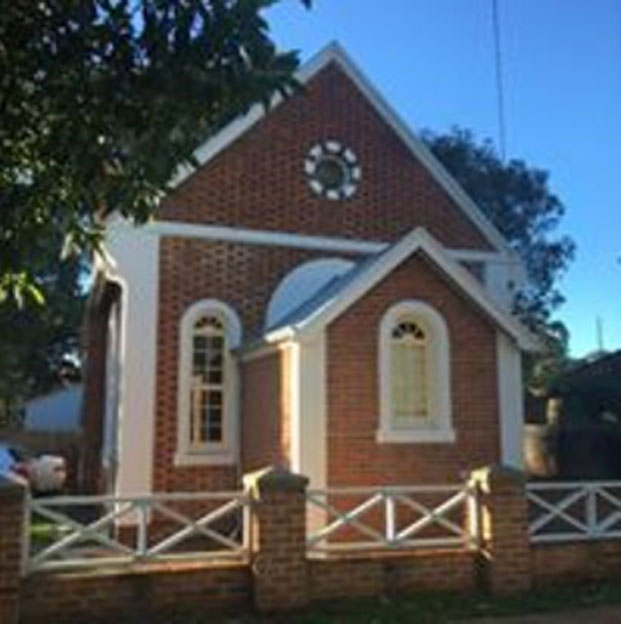
Meadow Street Guildford
- https://en.wikipedia.org/wiki/John_Septimus_Roe
- http://www.wanowandthen.com/John-Septimus-Roe.html
- http://adb.anu.edu.au/biography/roe-john-septimus-2600
- https://www.abc.net.au/news/2015-02-25/john-septimus-roe2c-the-man-who-mapped-out-perth/6261214
- https://encore.slwa.wa.gov.au/iii/encore/search/C__SJohn%20Septimus%20roe__Orightresult?lang=eng
William and Eliza Shaw
In 1830 the Shaw family from Leicester in England travelled to the Swan River Colony on board the Egyptian. Accompanying William Shaw was his wife Eliza (nee Cooper), sons, Nathaniel Chapman, Charles William, Frederick James, George Edward and daughters, Elizabeth Caroline and Mary Louisa. A further three children would be born in the Colony.
William had been a Captain of the Rifle Brigade, fighting at the battle of Waterloo under Wellington. Upon arriving in the Swan River Colony, they settled at a property located in Upper Swan called Belvoir (pronounced ‘beaver’). Their neighbours included the Irwins, Tanners, Burgesses and Brockmans, all playing a significant role in the early establishment of the Colony. Tragically two of the Shaw sons drowned at Belvoir on 10 November 1830.
William Shaw died in 1862, leaving his wife and large family to fend for themselves. Eliza continued to manage Belvoir with limited assistance from some family members. She was a prolific writer and sent letters home often. In one letter she wrote “Ours is the most friendly neighbourhood you can imagine…I am the richest person in the world possessing the best, the very best of friends in dear Old England, and certainly the most respectable, kind and worthy ones in Western Australia.”
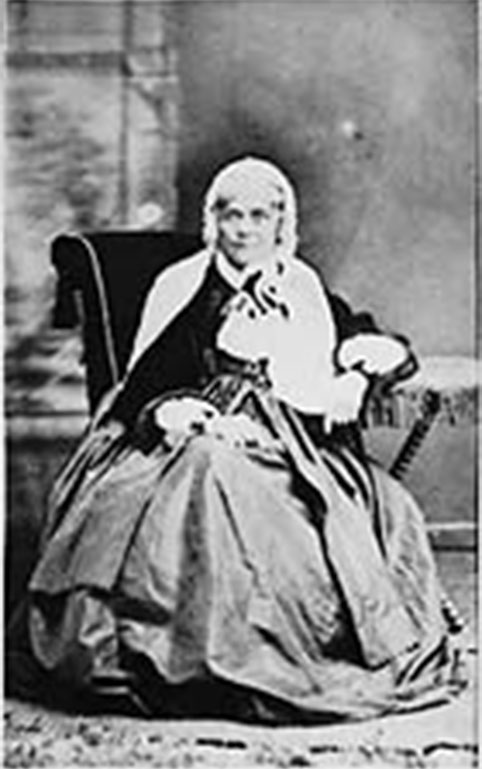
(1794 – 1879)
Eliza wrote detailed diaries, one of which is held in the Swan Guildford Historical Society collection. In another letter she documented the early building of Belvoir, describing their original ‘plaster and daub’ home as a structure 39 × 12 feet (11.8 × 3.6 m) that was divided into three rooms by canvas partitions. The main room had a fireplace and two small ‘gothic’ windows purchased in Leicestershire. Her sketch of the cottage, drawn in 1831, shows it with a trellised kitchen behind.
Eliza was also very interested in the natural sciences and painted watercolours of the native flora and fauna. She was an excellent pianist and needlewoman with some of her samplers from the early 1800s surviving today. She taught local children to play the piano and her own children attended the “Brushwood school”, a very early school established in 1839 by the Rev. J Mitchell.
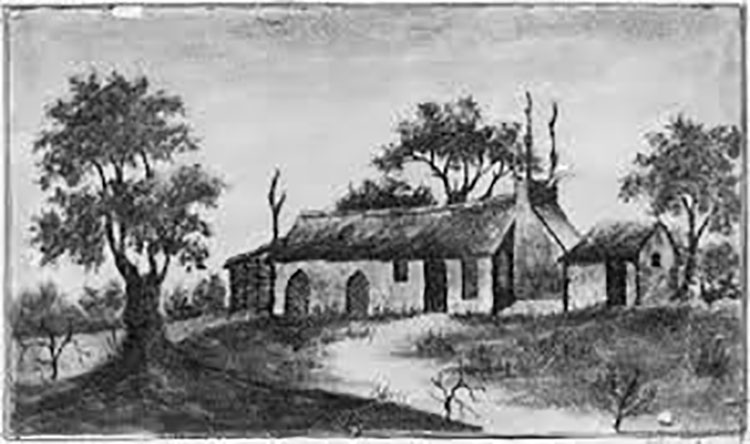
More Information
William Tanner
William Tanner was already a prosperous landowner in England, owning two estates when he arrived in Western Australia in 1831 with his wife Hester and son. He had successfully invested the capital he had received upon the death of his father which helped fund his ventures upon arrival into the Swan River Colony. A very talented businessman with a vast knowledge of farming, he was able to adapt these techniques to suit the climate and conditions in the Colony.
In addition to his original 1831 land grant which he named Baskerville, in 1832 Tanner was granted Lieutenant Preston’s property adjacent to Success Spring 31 Swan location P (1281 acres) dubbing it Lockeridge and the West Guildford villa lot Q2. In 1834, his neighbour The Rev. J. Wittenoom sold his 20 acre lot designated R1 to Tanner. In 1837, Tanner further extended his West Guildford holdings by having his agent (Tanner was at that time in England) purchase the 1531 acres of lot Q1, the former Government reserve, which had originally comprised both lots Q1 and Broun’s estate. Thus, by the late 1830s, William Tanner had established himself as the largest single owner of land in what was later to be the town of Bassendean, holding overall approximately 50 percent of the district.
In 1833 Tanner leased Woodbridge from Captain Stirling and contemplated building a home at Lockeridge but this did not eventuate. He also leased Caversham Estate in the late 1830s and early 1840s, but his primary residence remained at Baskerville until 1843 when he listed his address as Wexcombe, another of his Swan landholdings.
In 1841 he leased land to Edward Hamersley for £1,200 only to lease it back again two years later, and in 1851 the Villa lot was sold by his agents to Charles Pratt. The remaining West Guildford estates were kept intact until 1897 when they were sold by the executors of his estate.
In addition to his considerable land ownings and interest in farming and agriculture, Tanner was very involved in civic affairs and the social and political life of the colony. He became spokesperson for the anti-government faction voicing his and other landowners concerns in relation to who could hold land. Tanner believed military personal were favoured over other settlers who were excluded from decision making. He organised several public meetings and was appointed as a member of the Legislative Council in 1840. He was also appointed as a magistrate for the upper Swan district, a position with great responsibility especially in relation to the inescapable and unresolvable conflict of interests between the Aboriginal inhabitants and the white settlers. Tanner was fully aware of the prior claims of the Aboriginals, but he was determined that they should not hamper the economic aims of the white investors.
In another venture, Tanner partnered with Francis Lochee and found the Inquirer newspaper in competition with the establishment and government-biased Perth Gazette. The Inquirer was an immediate success and soon had double the circulation of its opponent.
Tanner furthered expanded on his ventures, developing an interest in colonial banking. He was a director and one of the major shareholders in the reconstituted Western Australian Bank and was elected as chairman of the Agricultural Society in 1841.
Tanner made several trips back to England, in large part due to his wife’s homesickness. It was on one of these trips that William died in 1844 and in his will, he appointed his brother-in-law Oriel Viveash and his friend William Brockman as trustees for the estates which he stipulated were to be kept for his children until they came of age.
Samuel Waterman Viveash
Dr. Samuel Waterman Viveash and his wife Susan sailed from England on the ship Britomart on 3rd July 1838, arriving in Fremantle on 5th December 1838.
He came to Western Australia as a medical practitioner. From 1850 he was responsible for the newly arrived convict labourers in the Swan District, and Surgeon to the Guildford Convict Depot from 1852.
He was also appointed resident magistrate of the Swan District, where he heard cases, firstly in a small room within the Colonial Goal. Later he presided over cases in the newly built Guildford Courthouse. He continued as Magistrate until 1872, making him the longest serving in the Swan District.
Samuel and Susan Viveash took up land in the Avon Land district, before moving to the Houghton Estate. They were then allocated Swan Location 14A known as Wexcombe. The Viveash homestead “Ashby” was built here in 1853.
Here the couple raised eleven children. Samuel Viveash died on 13 June 1880, and is buried in the churchyard at Middle Swan. His wife Susan died in 1890.
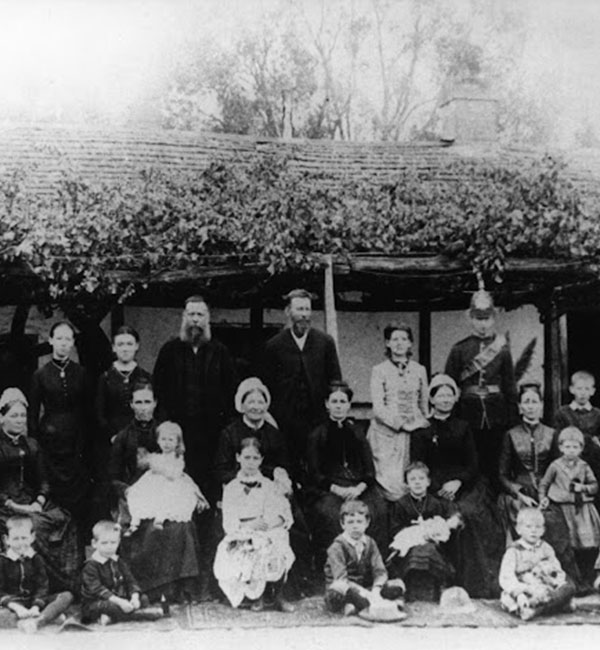
Newsletter
Sign up to our online newsletter mailing list to receive the latest newsletters from Swan Guildford Historical Society, direct to your email.
